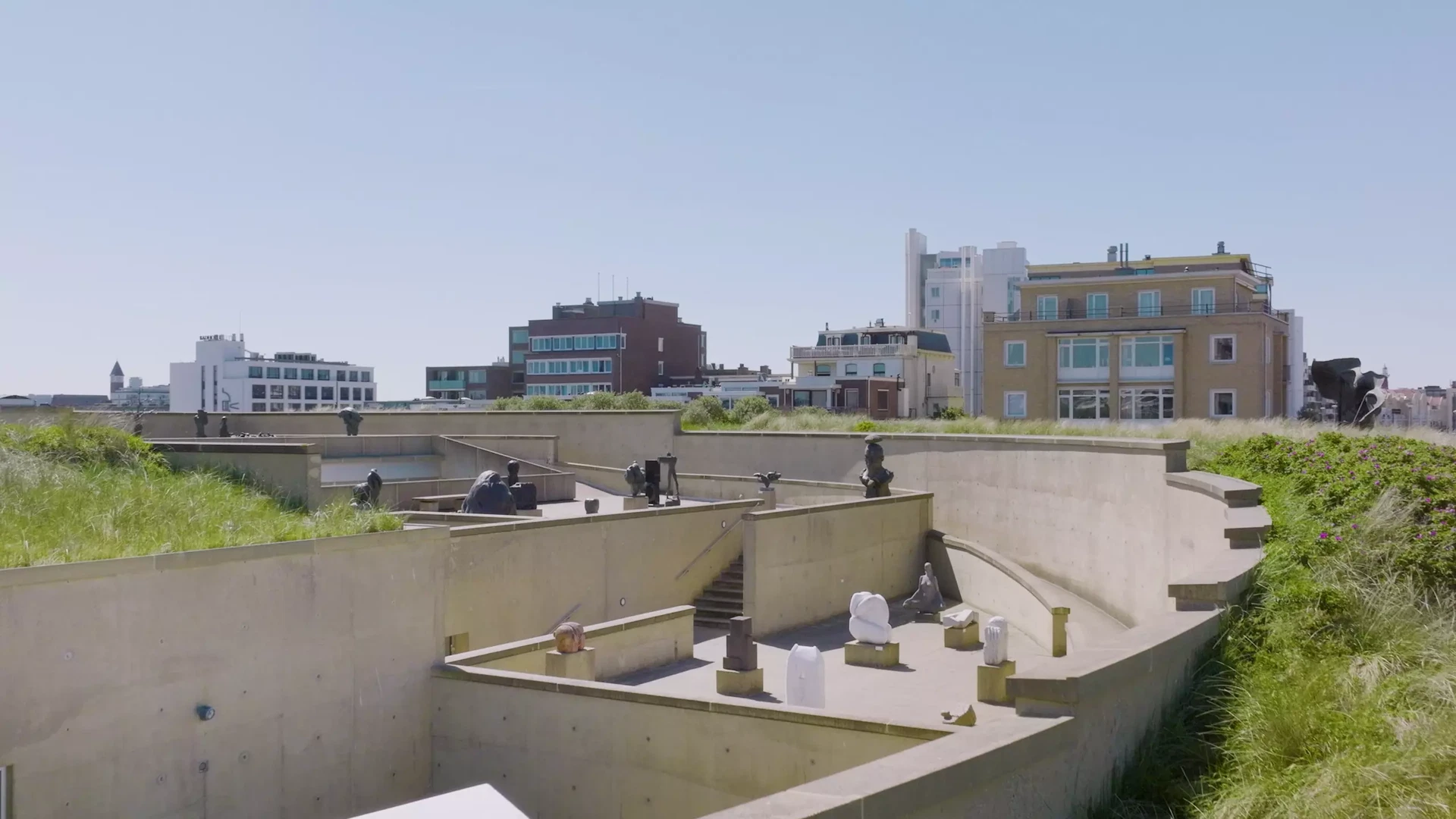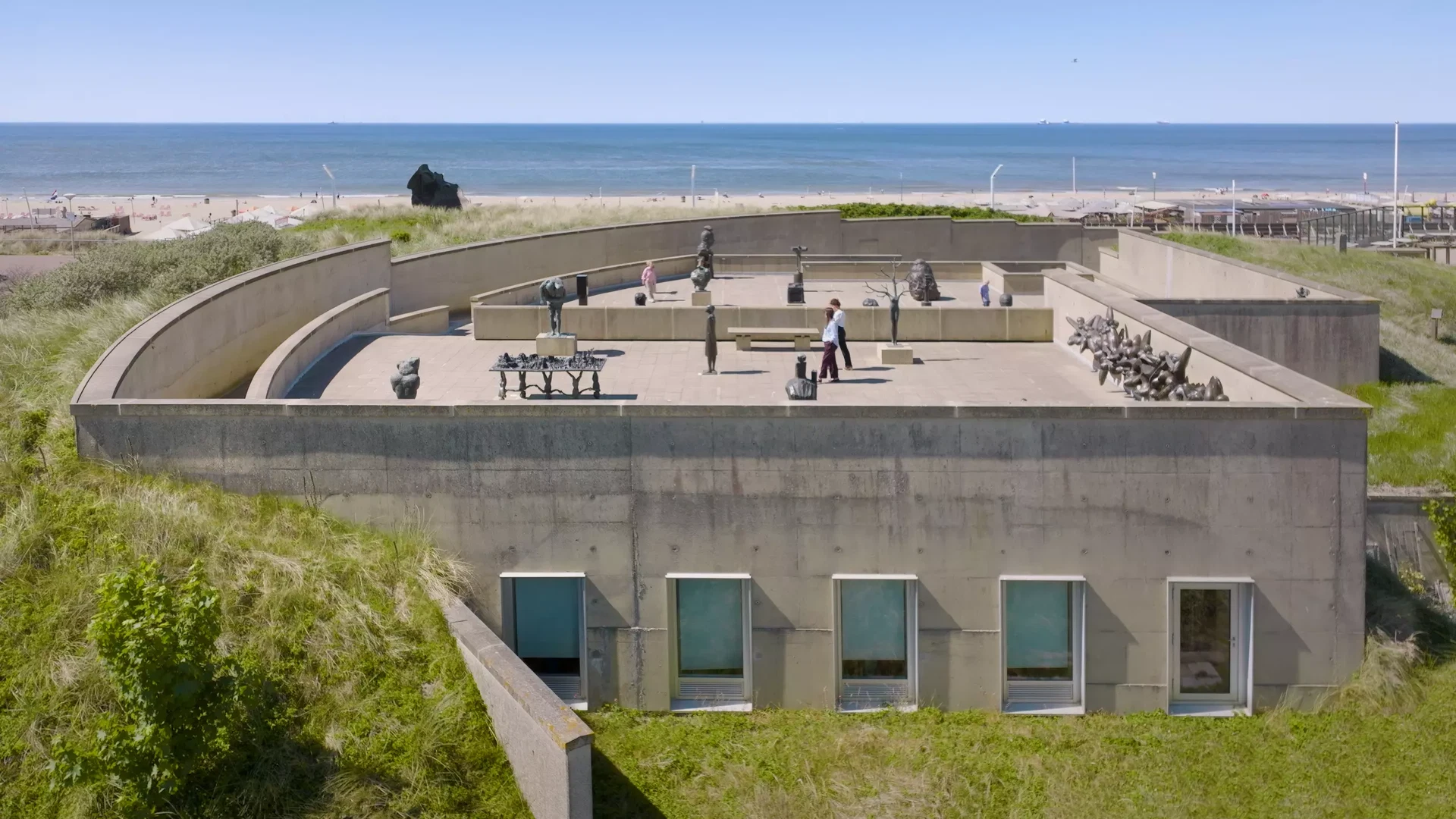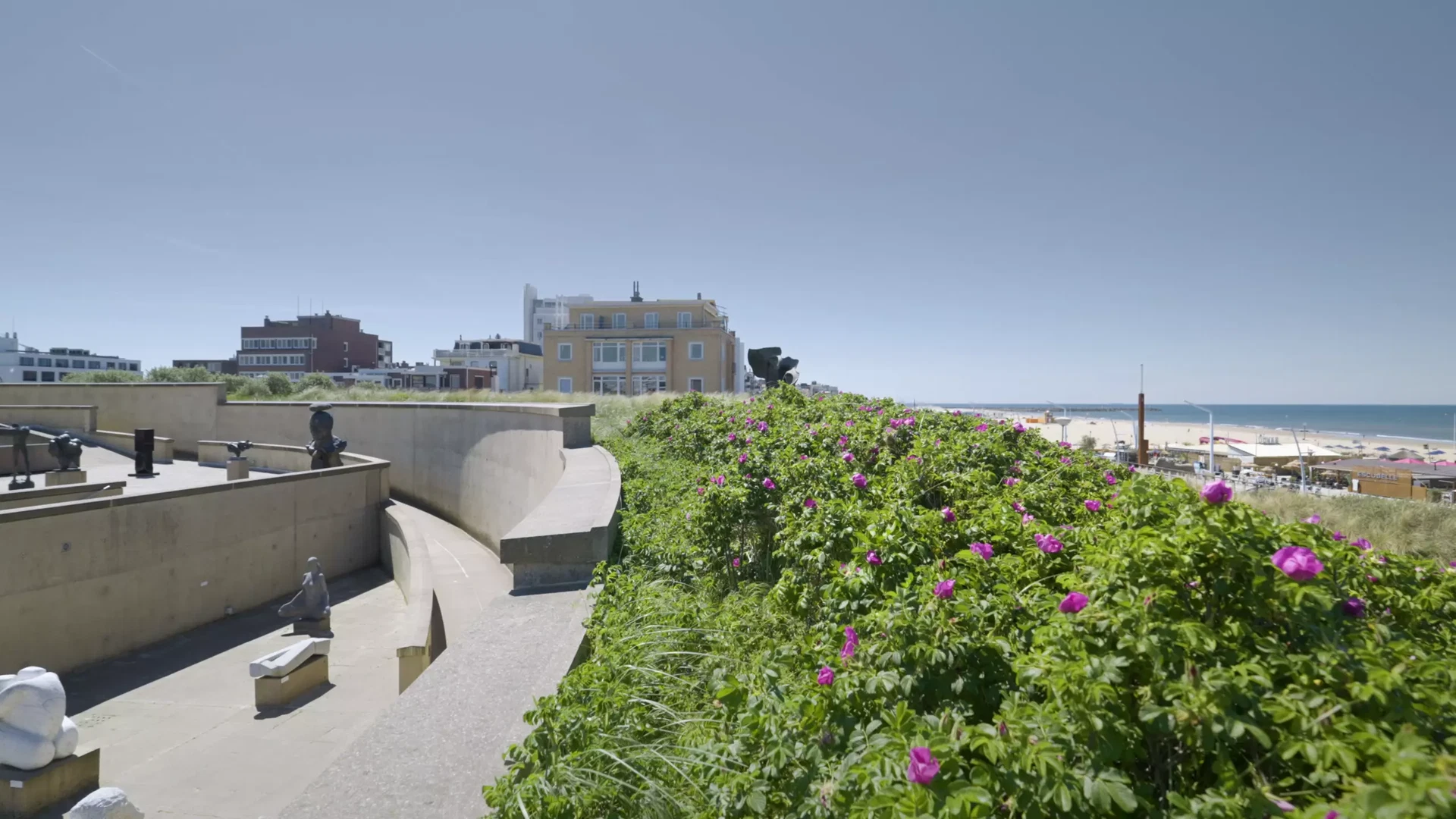Building
Museum Beelden aan Zee is nestled in the dunes of The Hague, directly beneath the historic Pavilion Von Wied, with a view of the sea. Architect Wim Quist designed the building using sand-colored materials that allow the museum to almost blend into the surrounding dune landscape. A place that not only surprises with its art, but is also cherished for its remarkable architecture.
Sculpture, Architecture and Nature
Museum Beelden aan Zee is nestled in the dunes of The Hague, directly beneath the historic Pavilion Von Wied, less than 500 meters south of the Kurhaus. Architect Wim Quist designed the building using sand-colored concrete, glass, natural stone, and wood—materials that allow the museum to almost blend into the surrounding dune landscape. It is a place that not only surprises with its art, but is also cherished for its remarkable architecture and stunning sea views.
From the outside, nothing reveals the sculptural treasures waiting to be discovered within. In summer, it’s a delight to stroll along the sculpture terraces and patios, or enjoy a drink on the sunny terrace, sheltered from the bustle of the boulevard. In winter, the beach is returned to nature, and Scheveningen takes on a completely different atmosphere. The museum café offers a seasonal menu that changes throughout the year.
Wim Quist
Beelden aan Zee was designed by the Dutch architect Wim Quist. The building is embedded in the dune. On top of the museum stands the historic Pavilion Von Wied, built in 1826 by order of King Willem I. Unlimited natural light and spacious dimensions are characteristic of the museum. All materials used – concrete, Italian granite, beech wood, and American pine – were selected for their sand color, allowing the museum to blend with its surroundings.
Art and Poetry
On the land side, both halves of the museum are connected by The Transparent, a glass wall designed by architect Wim Quist and graphic designer Reynoud Homan, featuring poems by sixteen renowned Dutch and Belgian poets – including Claus, Haasse, Kopland, Mulisch, Mutsaers, and Wolkers – who were inspired by the building, the collection, and the location of the Beelden aan Zee museum.


